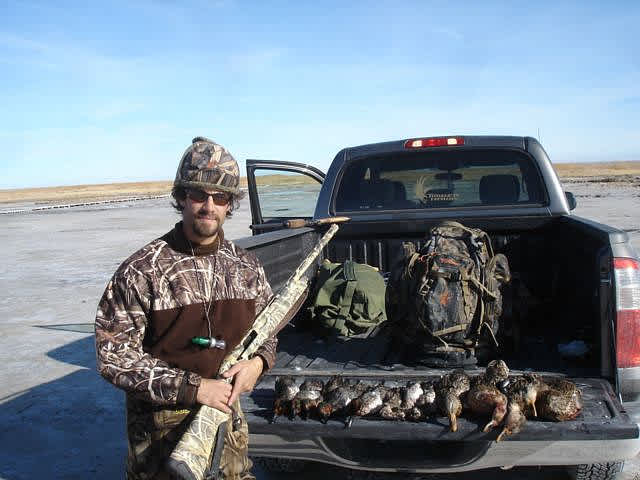How To Buy a Duck Hunting Gun
OutdoorHub 05.17.11

Are you looking for the best pump shotgun this duck hunting season? Have you explored all the options? Many experienced waterfowlers use semi-autos and the new “intertia” guns, but there’s a stalwart group of oldschoolers, and a growing family of youngsters who swear up and down that best duck hunting shotgun is the simplest: a pump action model. Who’s right?
For starters, we can all agree that from a technical standpoint, the purest type of scattergun is a good ‘ol single-shot, or side-by-side model, but most guys want to maximize their chances on ducks by having three shots. Besides, duck hunters are notoriously rough on their gear, so grandpa’s mint-condition, custom-engraved trap gun is rarely found bouncing around in a muddy duck boat.
The first gun mentioned by several Outdoor Hub staffers was the trusty family of Remington 870 Wingmaster and Express guns.

Although (or maybe because) the design hasn’t changed much in its 61-year history, the 870 is widely thought of as one of the best pump shotguns for a variety of applications besides waterfowl, from upland birds and small game, to larger game like deer. This rugged smoothbore even stands up to the requirements of tactical and law enforcement agencies. The most popular gauges are 12 and 20, but it’s been offered in 16, 28 and .410 bores, not to mention multiple barrel lengths and also rifled slug barrels. The fact that you can now get one in with a stainless barrel, fitted to a hi-tech polymer stock means that you can have the best of both worlds — a throwback design from a bygone era, and a modern, efficient gun that won’t jam up, can take a beating, and will kill you a mess of birds!
In the category of “intertia,” or semi-autos that don’t rely on internal gas pressure for cycling a round, the duck hunting shotgun on the top of our list is Benelli’s Super Black Eagle II. Although all of us loved the principle of a semi-auto that answers the excessive weight problem of older gas models, we also agree that you have to spend a heckuva lot to get a non-gas semi-auto that actually works well in all conditions. When it comes to cycling shells into positions for followup shots, the reliability curve is quite steep when one dips much below the $600 mark for intertia guns.
What’s great about the Super Black Eagle II is that it pretty much represents pinnacle of intertia-driven guns. We say this because not only is it very reliable in all conditions but with this model Benelli has managed to reduce recoil and astounding 48% which means smaller-framed folks can shoot 3 in. shells with more accuracy and without being knocked on their butts. After all, when duck hunting season rolls around the last thing you want to worry about is how hard your gun will kick.

One of our staffers who has experience with the Mossberg 835 pump says he liked shooting 2 3/4 and 3 in. shells, but when blasting geese with the 3 1/2 in shells he occasionally had problems with spent plastic hanging up or “stovepiping” on the way out. Although plenty durable for swampy conditions the Mossberg, he contends, is better as a turkey gun.

The only conclusions we reached when comparing these guns is that, shooting and round-cycling performance being equal, the choice of pump or semi-auto just comes down to whether or not a shooter wants to move his or her arm back and forth between shots. If doing that doesn’t affect your target acquisition, then your chances of a mechanical problem are mostly (but not always) reduced by shooting a pump gun. Because there’s a greater chance of mechanical failure with any semi-auto however, then a pump gun will always have more to offer from a pure reliability standpoint.
The other basic finding we arrived at is that it’s very difficult to get really reliable intertia-operated semi-auto for under $600.
Good luck this duck hunting season, and don’t forget that while industry salesmen just want you to buy another gun, the best pump shotgun you can find might just be the one you’ve been using all along!

